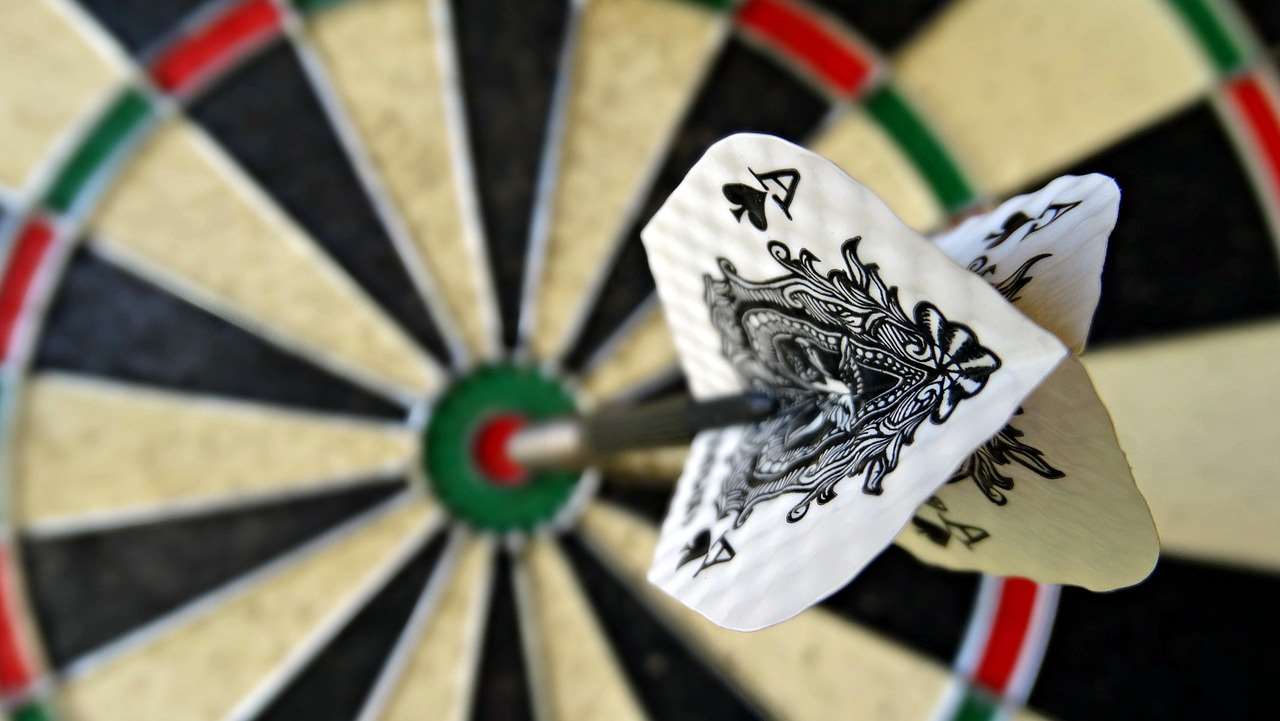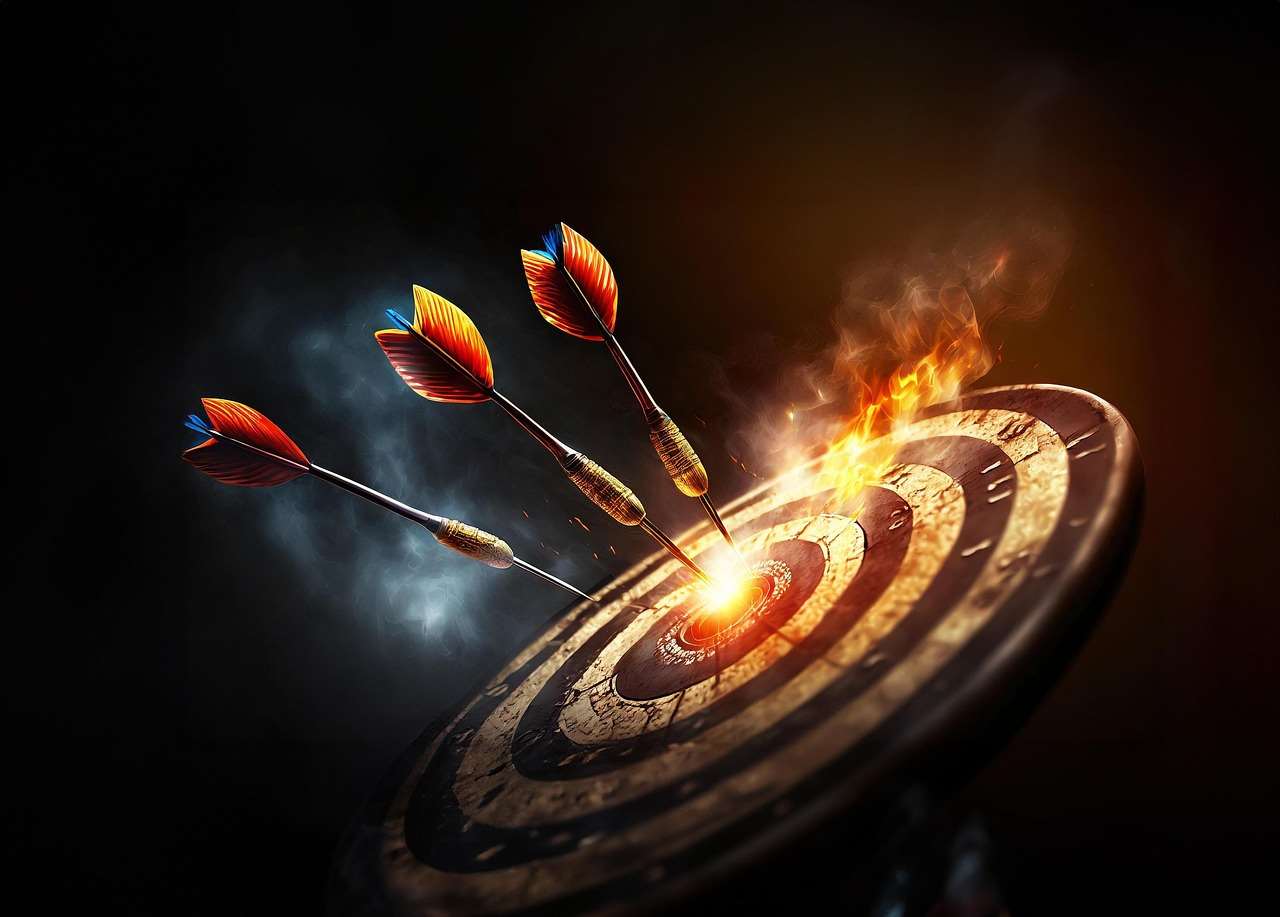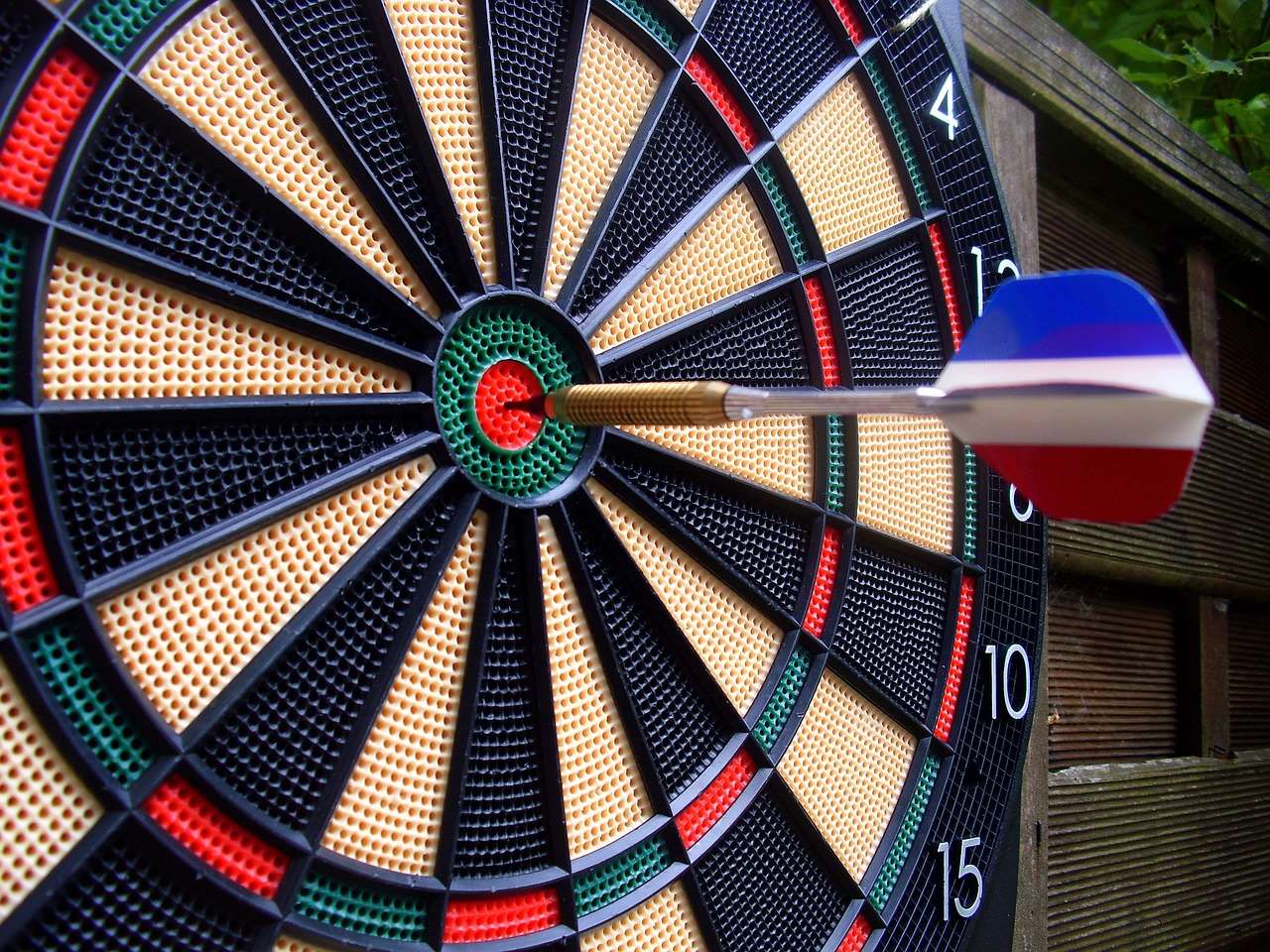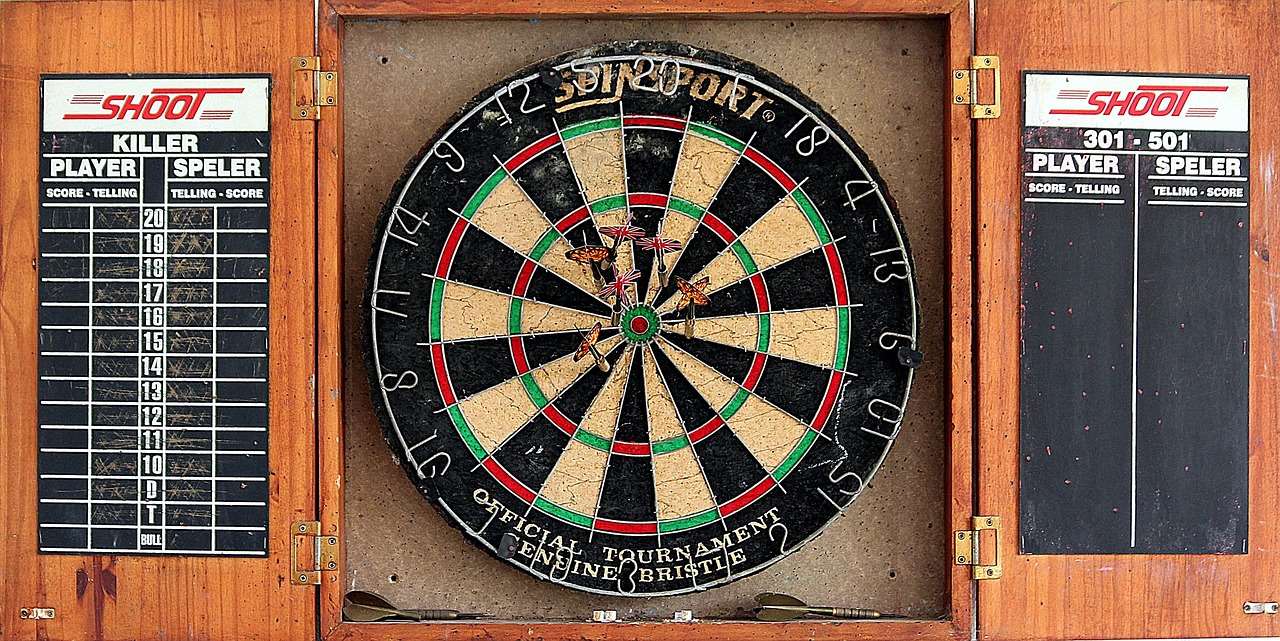For power throwers seeking enhanced stability and penetration, **heavy darts** are often the key to unlocking greater accuracy and consistency. This article explores the advantages of using **heavy darts for power throwers**, covering everything from weight selection and grip techniques to finding the perfect setup for your throwing style. We’ll delve into the science behind heavier darts, discuss how they can improve your game, and offer practical tips for making the switch.
⚠️ Still Using Pen & Paper (or a Chalkboard)?! ⚠️
Step into the future! The Dart Counter App handles all the scoring, suggests checkouts, and tracks your stats automatically. It's easier than you think!
Try the Smart Dart Counter App FREE!Ready for an upgrade? Click above!
Why Choose Heavy Darts For Power Throwers?
The allure of **heavy darts for power throwers** lies in their inherent stability. Unlike lighter darts that can be easily deflected by slight imperfections in your throw, heavier darts maintain their trajectory with greater force. This means that even if your release isn’t perfectly clean, a heavier dart is more likely to reach the target with minimal deviation. For those who naturally throw with a powerful motion, the extra weight can provide a significant advantage.

Consider the physics involved: a heavier object requires more force to alter its course. When you throw a dart with considerable velocity, the added mass of a heavier dart resists unintended movement caused by shaky hands or minor inconsistencies in your release point. This translates to tighter groupings and a more predictable flight path. Understanding how to choose the best dart equipment begins with finding the right dart weight.
Benefits of Using Heavier Darts:
- Increased Stability: Less susceptible to wobble and deflection.
- Greater Penetration: More likely to stick firmly in the dartboard.
- Reduced Effort: Ironically, the weight can help smooth out your throwing motion, requiring less conscious effort.
- Improved Accuracy (for power throwers): The stability often leads to tighter groupings and higher scores.
Selecting the Right Weight: Finding Your Sweet Spot
The optimal weight for **heavy darts** is subjective and depends largely on individual preferences and throwing mechanics. However, a general guideline for power throwers is to start with darts in the 24-26 gram range. Experimenting within this range will help you discover what feels most comfortable and controllable. Remember that the weight of the dart influences its flight path, and finding the right balance is crucial.
Don’t assume that the heaviest dart is automatically the best. A dart that’s too heavy can lead to fatigue and strain, negating the benefits of increased stability. Conversely, a dart that’s too light might feel uncontrollable and unstable. The key is to find the weight that allows you to generate consistent power without sacrificing accuracy.
Grip Techniques for Heavy Darts
Adjusting your grip is essential when transitioning to **heavy darts for power throwers**. A common mistake is gripping the dart too tightly, which can cause tension and negatively impact your throw. Instead, focus on a relaxed grip that allows the dart to flow smoothly from your hand. Here are some grip considerations:
- Balance Point: Find the dart’s balance point and grip it slightly forward of this point for optimal control.
- Pressure: Apply just enough pressure to maintain a secure hold without squeezing.
- Finger Placement: Experiment with different finger placements to find what feels most natural and comfortable.

Many power throwers find that a slightly longer grip length provides better control over heavier darts. This allows for a more deliberate release and helps prevent the dart from slipping or wobbling during the throw. Ultimately, the best grip is the one that feels most comfortable and allows you to consistently hit your target.
Stance and Throwing Motion Adjustments
While the weight of the dart is a significant factor, your stance and throwing motion also play crucial roles in achieving accuracy. With **heavy darts for power throwers**, slight adjustments to your stance can enhance stability and balance. A slightly wider stance, for example, can provide a more solid base and help you maintain control throughout your throw.
Pay close attention to your arm motion. A smooth, fluid motion is essential for consistent results. Avoid jerky or abrupt movements, as these can disrupt the dart’s trajectory. Instead, focus on a controlled release that allows the dart to flow naturally from your hand. Think of it as guiding the dart towards the target rather than forcing it.

Key Adjustments to Consider:
- Stance: Experiment with different foot positions to find a stance that feels stable and balanced.
- Arm Motion: Focus on a smooth, fluid motion that minimizes jerky movements.
- Release Point: Practice releasing the dart at the same point in your throwing arc each time.
Dart Material and Design Considerations
The material and design of your darts can also impact your performance. Tungsten darts are a popular choice among serious players due to their high density, which allows for a slimmer barrel profile. This can be particularly beneficial for power throwers who prefer a more streamlined grip. The slimmer profile allows for tighter groupings, improving your overall score. Choosing the right dart shaft and flights is another critical decision. Understanding different flight shapes and materials can drastically impact the dart’s stability and trajectory. Flights with larger surface areas provide more stability, while smaller flights offer increased speed.
Beyond tungsten, brass and nickel-silver are common materials, with each offering a different balance of cost and performance. Brass darts are a budget-friendly option, but they tend to be bulkier and less durable than tungsten or nickel-silver darts. Nickel-silver darts offer a good compromise between cost and performance, providing decent durability and a reasonable barrel profile. Experimenting with different materials and designs can help you find the perfect darts for your individual style.
The Importance of Practice and Patience
Transitioning to **heavy darts for power throwers** requires practice and patience. Don’t expect to see immediate results. It takes time to adjust your grip, stance, and throwing motion to accommodate the increased weight. Be prepared to spend hours practicing and experimenting with different setups until you find what works best for you. Regular practice is essential for developing muscle memory and improving your consistency.
Consider filming yourself throwing to analyze your technique and identify areas for improvement. Small adjustments to your stance, grip, or release point can make a significant difference in your accuracy. Don’t be afraid to experiment and try new things. The key is to find what feels most natural and comfortable for you.

Maintaining Your Heavy Darts
Proper maintenance is essential for prolonging the life of your **heavy darts** and ensuring consistent performance. Clean your darts regularly with a soft cloth to remove dirt and grime. Replace worn or damaged flights and shafts promptly to maintain optimal flight characteristics. A well-maintained dart will perform more consistently and last longer, saving you money in the long run. Ensure your optimal dartboard lighting solutions guide are followed to maximise time using your darts.
- Cleaning: Wipe your darts with a soft cloth after each use.
- Flight Replacement: Replace flights when they become frayed or damaged.
- Shaft Replacement: Replace shafts when they become bent or broken.
Advanced Techniques with Heavy Darts
Once you’ve mastered the basics, you can start exploring more advanced techniques. For example, learning to control the dart’s spin can help improve its accuracy and penetration. Experiment with different release points to see how they affect the dart’s trajectory. Mastering these advanced techniques requires dedication and practice, but it can significantly enhance your overall performance.

Choosing the Right Dartboard for Heavy Darts
The type of dartboard you use can also impact your experience with heavy darts. A high-quality bristle dartboard is essential for optimal performance and durability. Sisal fiber dartboards are the most popular choice among serious players due to their self-healing properties, which help extend the life of the board. The board needs to withstand the impact of **heavy darts for power throwers**, so invest in a good one!
Consider the density of the sisal fibers when choosing a dartboard. A denser board will provide better penetration and reduce the likelihood of bounce-outs. Rotate your dartboard regularly to distribute wear evenly and prevent specific areas from becoming overly worn. Proper care and maintenance will help prolong the life of your dartboard and ensure consistent performance. You also want to ensure the lighting is adequate, so be sure to check out the best dartboard lighting systems.
Conclusion: Unleashing Your Power with Heavy Darts
Embracing **heavy darts for power throwers** can be a game-changer, offering enhanced stability, improved penetration, and ultimately, greater accuracy. By selecting the right weight, adjusting your grip and stance, and dedicating yourself to practice, you can unlock your full potential and elevate your dart game to the next level. Experiment, refine your technique, and remember that consistency is key. Now it’s time to experiment and choose the best dart equipment to elevate your game. Happy darting!
Hi, I’m Dieter, and I created Dartcounter (Dartcounterapp.com). My motivation wasn’t being a darts expert – quite the opposite! When I first started playing, I loved the game but found keeping accurate scores and tracking stats difficult and distracting.
I figured I couldn’t be the only one struggling with this. So, I decided to build a solution: an easy-to-use application that everyone, no matter their experience level, could use to manage scoring effortlessly.
My goal for Dartcounter was simple: let the app handle the numbers – the scoring, the averages, the stats, even checkout suggestions – so players could focus purely on their throw and enjoying the game. It began as a way to solve my own beginner’s problem, and I’m thrilled it has grown into a helpful tool for the wider darts community.